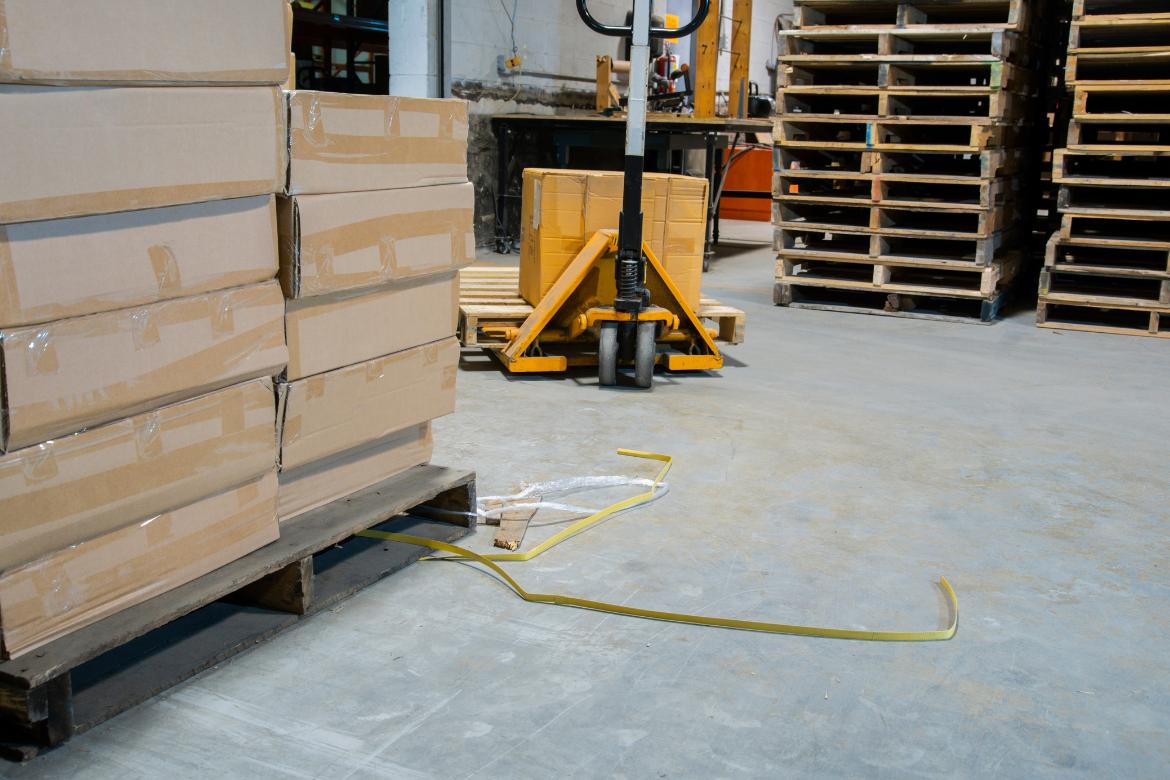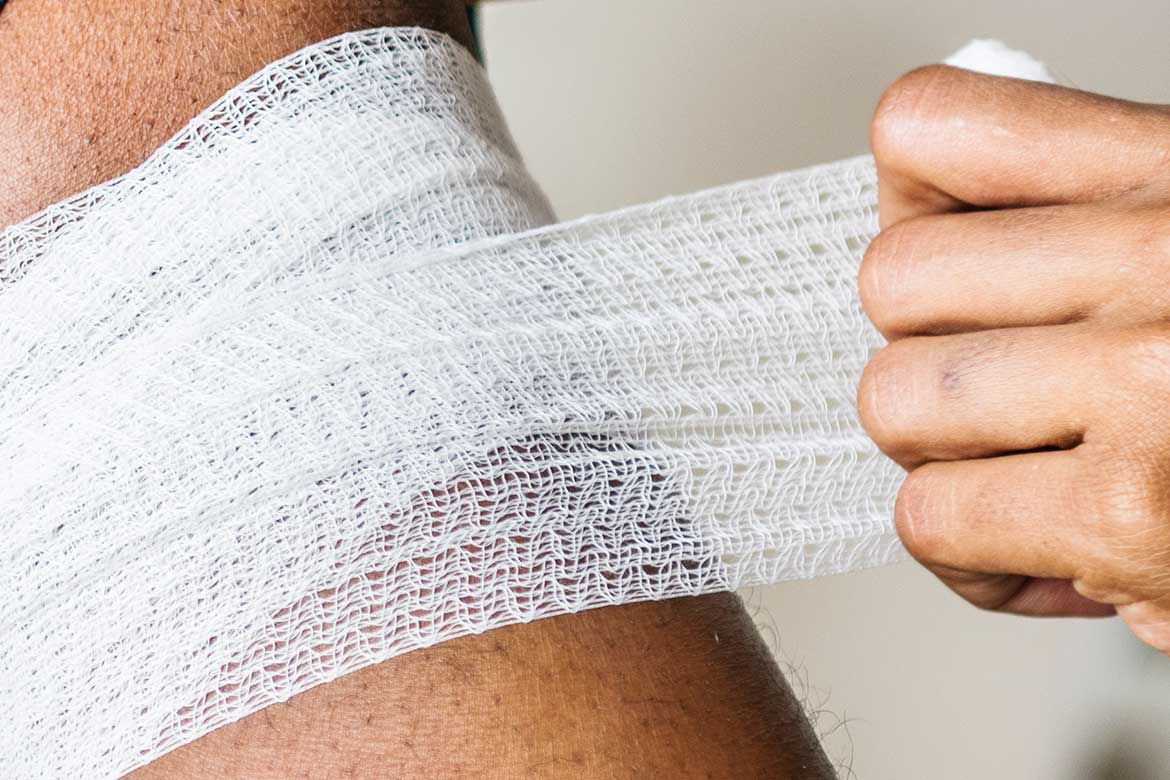19th July, 2023
The Simple Guide To Slip And Trip Hazards At Work
In this simple guide to slip and trip hazards at work, we will look at some examples of slip and trip hazards, and the best ways to prevent those hazards from creating slips and trips in your workplace.

Slip and trip hazards probably won't be top of your health and safety concerns at work. But managing slip and trip hazards is a quick, easy (and often cheap) way to improve health and safety in your workplace.
30% of workplace injuries in the UK were caused by slips, trips and falls on the same level in 21/22, according to HSE statistics. That's over 150,000 reported accidents!
And that's just the reported injuries, where people were seriously injured. Most slips and trips probably don't get reported.
In this simple guide to slip and trip hazards at work, you can find some common examples of slip and trip hazards, and how to control them so you and your team don't become one of the 400+ people injured at work each day in the UK.
We'll start with trip hazards.
What is a trip hazard?
A trip hazard is something that could trip you up. The curled-up edge of a mat on your floor is a trip hazard. The cable running across your office is a trip hazard. The sticky-out corner of your desk could be a trip hazard. Anything left on the floor, that shouldn't be there, is probably a trip hazard.
And your trip hazards can trip people up, literally.

The more trip hazards you have, the more likely someone will trip up at some point. Any trip hazard could be an accident waiting to happen.
Examples of trip hazards
We've already discussed some trip hazards above. Before you keep reading, take a quick look around you. Can you see any trip hazards?
How many could you see? I bet you spotted a few. Trip hazards can be found in most places, here are some common examples of trip hazards at work:
- Uneven floors
- Trailing cables
- Obstacles
- Obstructions
- Loose flooring
- Loose footwear
- Poor housekeeping
- Poor lighting
- Changes in floor level
- Untied shoelaces
- The straps of a bag
How to control trip hazards
The examples above might seem common, and some even unavoidable, but they shouldn't be ignored. Even small trips can cause serious injuries.
Not every trip hazard will create a huge risk, but by controlling the hazard, you can reduce the risk.
You can control trip hazards by:
- Removing them
- Moving them
- Fixing them
- Highlighting them
Remove trip hazards
If trip hazards can be removed, they should be. Very often, trips are caused by something being left on the floor that shouldn't be there.
And because it's not usually there, no one expects it, and so they trip over it!
For example, discarded packaging from your work might be creating a trip hazard for other people walking through your work area. By keeping your work area tidy and disposing of waste immediately, you help create a safer environment for yourself and others.

Removing a hazard is the best way to eliminate the risk. You can't trip over something that's not there.
Move trip hazards
You might not be able to remove a trip hazard, as it might be something that's needed.
For example, you can't dispose of a trailing cable if you need to be able to plug in the equipment you are using. But you can re-route the cable so that it doesn't cross a walkway.
Fix trip hazards
Some trip hazards don't need to be removed, but they can be fixed. For example, a pothole in a walkway can be fixed by resurfacing or filling the hole. Or a frayed carpet edge can be replaced.

Sometimes, a temporary fix might be all that's necessary. For example, putting a cover or ramp over a trailing cable or an uneven surface.
Highlight trip hazards
If something can't be removed, you could highlight it instead. Trips usually happen when the hazard is not expected.
If you can warn people of the hazard, e.g. making a stair tread a contrasting colour or making sure that lighting is good in walkways, it helps people to see the hazard before it trips them up.
What is a slip hazard?
A slip hazard is any hazard that creates a risk of slipping. The rainwater coming in on people's shoes is a slip hazard. The floor wet from being mopped is a slip hazard.
And it's not just water and liquids that are slip hazards. The smooth soles of your shoes could be a slip hazard. A dusty floor can be a slip hazard.

Slip hazards, as the name suggests, can make people slip.
Skip hazards are usually created by something temporary, like rain, ice, dust, cleaning, or leaks.
Examples of slip hazards
We've mentioned a few slip hazards above. Before you keep reading, can you think of any more?
Think about your workplace and different weather events or the different activities that happen. Do any slip hazards get created?
How many could you think of? Here are some common examples of slip hazards at work:
- Wet floors
- Slippery floors
- Dusty floors
- Loose mats
- Loose floor coverings
- Slippery soles
- Socks
- Icy conditions
- Wet leaves
- Wet ground
- Leaks
- Spillages
How to control slip hazards
Like trip hazards, slip hazards being present are a sign that people could get hurt. Broken legs, backs, arms and even head injuries can happen as a result of slip hazards being uncontrolled.
If you control the hazard, you can reduce the risk, and prevent slips in your workplace.
You can control slip hazards by:
- Preventing them
- Removing them
- Highlighting them
Prevent slip hazards
Slip hazards can occur due to new situations, rather than being permanent.
For example, a floor might not usually be slippy, but during wet weather, people's shoes bring rainwater in creating a slippery surface. Or during winter puddles may freeze.
While these slip hazards are not permanent, they can be predictable. If you have a tiled floor or smooth floor near an entrance, it's likely to get wet and slippery when people enter with wet shoes.
Using control measures like entrance mats to dry shoes, clearing ice from walkways, and having suitable a footwear policy can ensure that slip hazards are less likely to be created.

Remove slip hazards
Some slip hazards can't easily be predicted, like a burst pipe or a spilt drink or a leaky container. But they should be removed (and the source of the leak or spill fixed) as quickly as possible.
If you have a storage area, or an activity, that contains liquids, providing spill kits and training for what to do if a spill occurs can help make sure that any spill hazards get removed before they slip you up.
Highlight slip hazards
Not every slip hazard can be prevented or removed. For example, when you are mopping a floor, it's probably going to be slippery during the activity.
And if you are doing an activity that creates dust or loose fragments, the floor might be slippery until you are done and can clean it up.

In addition to making sure those doing the activity are wearing suitable footwear, you should also highlight the risk to other people so they don't accidentally step onto a slippery surface.
You could use a simple warning sign, or temporary barriers, depending on the risk level.
Download the free slips and trips toolbox talk template as a short refresher on slips and trips for you and your team.
This article was written by Emma at HASpod. Emma has over 10 years experience in health and safety and BSc (Hons) Construction Management. She is NEBOSH qualified and Tech IOSH.
Better health and safety...
We are here to help you and your business put safety in everything.
Learn MoreRecent posts like this...

HSE Fee For Intervention Charges Explained
FFI stands for 'fee for intervention', which was introduced under the Health and Safety (Fees) Regulations 2012. FFI aims to recover the HSE's costs, including inspection, investigation and enforcement action, charging businesses that are in breach of health and safety regulations.
Read Post
How To Plan For Better Health And Safety At Work
If you want better health and safety, you need to plan for it. And who doesn't want to stay safer and have fewer accidents and ill health in their workplace? In this blog post, we look at how to plan for better health and safety at work.
Read Post
No Injuries, No Health And Safety Problems!?
It's been over a year since the last injury in your workplace. But just because you haven't had any accidents doesn't mean you are safe or that your health and safety performance is good. Your accident reporting system might just be hiding the truth. No injuries, no problems!? Don't count on it.
Read Post